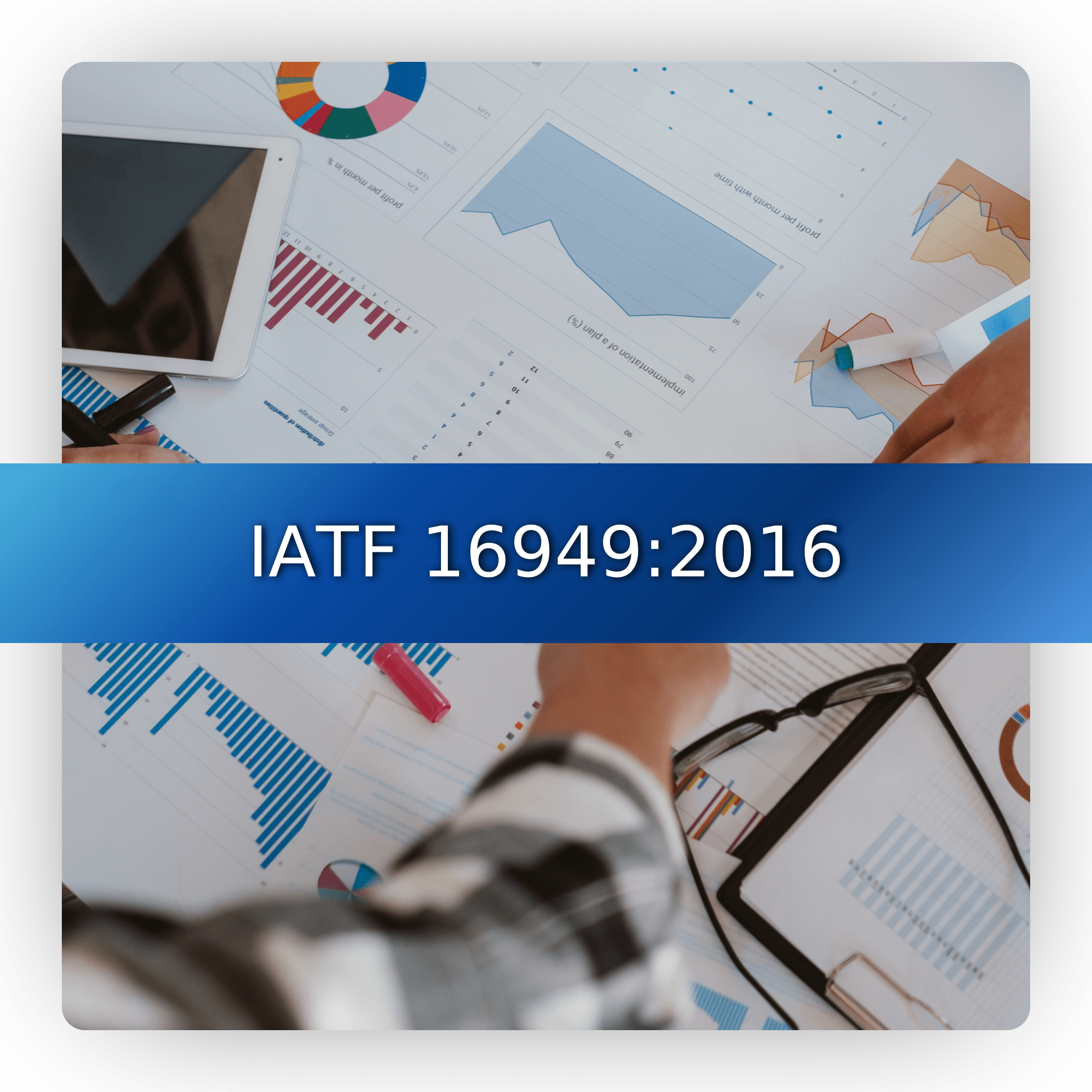IATF 16949:2016
What is IATF 16949:2016?
◾️ IATF 16949:2016 is an international standard of Quality Management System, especially for the Automotive industry.
◾️ Where IATF_16949 stands for Automotive OMS standard and 2016 refers to the published date. - This standard is applicable for all automotive industry irrespective of the scale of the industry.
◾️ The lst edition of ISO TS 16949 was published in 1999 by the International Automotive Task Force (IATF).
◾️ ISO 9001:2015 is a fundamental requirement of the Quality management system
◾️ IATF 16949 includes ISO 9001 and additional automotive industry-specific requirements.
◾️ This standard was developed and operated by the International automotive task force.
◾️ This standard gave a common platform for assessment and certification for the supply chain for the automotive industry in the world.
◾️ The latest Automotive QMS standard 16949:2016 is updated based on the feedback of certification bodies, auditors, suppliers, and OEMs.
◾️ This standard is easily integrated with other ISO standards such as 14001, 45001, etc.
◾️ The major focus of this standard is to develop a system that emphasizes continual improvement, defect prevention, reduce variation & waste in the supply chain.
◾️ This standard also includes the Customer's Specific Requirements (CS's) along with the standard's requirement.
◾️ This standard is fully in line with the IS 9001:2015.
What is the meaning of IATF?
◾️ The IATF is a group of automotive manufacturers & their respective trade associations.
◾️ Together they have formed a group to provide improved quality products to automotive customers worldwide.
◾️ The full name of lATF is the International Automotive Task Force and members are Daimler AG, Ford Motor Company, BMW Group, Daimler AG, General Motors Company, PSA Group, Renault, Volkswagen AG, etc
History of IATF 16949
◾️ The lst edition of ISO/TS 16949 was published in 1999 by the International Automotive Task Force.
◾️ This standard gave a common platform for assessment and certification for the supply chain for the automotive industry in the world.
◾️ Then after 2nd edition was published in 2002 and 3rd edition in 2009.
◾️ The 3rd edition of ISO/TS 16949:2009 is replaced by lATF_16949:2016 (1st edition).
◾️ The latest Automotive OMS standard 16949:2016 is updated based on the feedback of certification bodies, auditors, suppliers, and OEMs.
◾️ This standard is easily integrated with other ISO standards such as 9001, 14001, 45001, etc. - The milestones are mentioned below
Major Changes in IATF 16949:2016
◾️ Addition of OEM's Customer-Specific Requirements (CSRs) with an organization's OMS.
◾️ Another major change is the requirement for safety-related parts and processes
◾️ In the warranty management process requirement as addressing no trouble found
◾️ Enlarge the focus on corporate responsibility
◾️ Give a detailed explanation of supplier management & development requirements
◾️ Introduced new clause structure as Annex SL high-level structure, it adds process consistency with other ISO standards.
◾️ Improved product traceability & highlighting the latest regulatory requirements.
The IATF 16949:2016 focuses on:
◾️ Satisfying the customer's requirement and other stakeholder's requirements.
◾️ Promotes the continual improvement
◾️ focuses on defect prevention
◾️ Risk-based thinking
◾️ Integration of customer-specific requirements (CSR's)
◾️ First and second-party auditor competency
◾️ Development of products with embedded software
◾️ Waste and Variation reduction in the whole supply chain
◾️ Product Safety
◾️ Manufacturing Feasibility
◾️ Warranty management
Knowledge of below Five Core Tools
◾️ PP Production Part Approval Process
◾️ APQP Advanced Product Quality Planning
◾️ SPC Statistical Process Control
◾️ FMEA Failure Mode and Effects Analysis
◾️ MSA Measurement Systems Analysis
Process Approach
◾️ The process approach of the QMS means to define the processes of an organization.
◾️ In other words, we have to define process interactions and required inputs & outputs.
◾️ The purpose of the process approach is to help manage the processes in a systemic way to increase productivity.
◾️ By applying the PDCA Cycle in the process we can get benefits of continual improvement.
◾️ Measure process efficiency and effectiveness.
◾️ Continual improvement of process
Seven Quality Management Principles
◾️ Customer Focus
◾️ Leadership
◾️ Engagement of People
◾️ Process Approach
◾️ Improvement
◾️ Evidence-based decision making
◾️ Relationship Management
Why Implement IATF 16949?
◾️ Effectively Implemented IATF 16949 make sure that our customers receive constant, good quality products and services.
◾️ It will help us to acquire new businesses.
◾️ It defines the requirement for a Quality Management System when an organization wants to: ..
◾️ Clearly show the evidence of its ability to consistently provide products & services that meet customer's requirements.
◾️ Also, meet the applicable statutory, regulatory & product safety requirements.
◾️ Intensify customer satisfaction through the effective implementation of the QMS.
◾️ Implement processes for improvement of the system
◾️ Clearly, state objectives which are specific, measurable, achievable, time-bound & realistic and identify new business opportunities
◾️ Always customers first and make sure that consistently meet their requirement and intensify customer's satisfaction.
◾️ Identify the risks related to your business processes and also take appropriate action to eliminate or minimize the effect of the risk.
The key point for successful implementation of IATF 16949:
◾️ Understand the all clause wise requirement of ISO 9001:2015 and lATF 16949-2016
◾️ Perform an organizational Gap Analysis against both standards
◾️ Develop an implementation plan with responsibility and target date -Provide training for all relevant personnel
◾️ Update your existing system
◾️ Perform internal audit for successful implementation of IATF 16949.
Clauses of IATF 16949:2016
1. Scope
2. Normative references
3. Terms and definitions
4. The context of the organization
5. Leadership
6. Planning
7. Support
8. Operation
9. Performance evaluation
10. Improvement
